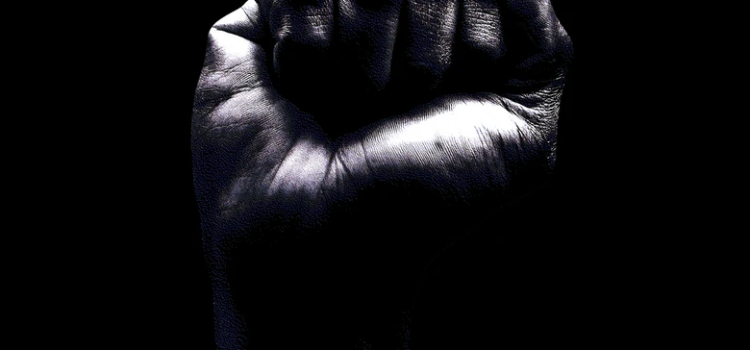

This article is an excerpt from the Shortform book guide to "Caste" by Isabel Wilkerson. Shortform has the world's best summaries and analyses of books you should be reading.
Like this article? Sign up for a free trial here .
What is racial superiority in the context of casteism? How has the belief in the inherent superiority of the white race been used to legitimize racial discrimination?
According to Isabel Wilkerson, the author of Caste: The Origins of Our Discontents, racial superiority is one of the eight tenets of the caste system. This belief is still at the heart of every interaction between the dominant caste and subordinate caste in America.
Read about how the belief in racial superiority is enforced and perpetuated in a caste system.
Racial Superiority and Caste
No caste system could survive without the collective belief in the unequivocal superiority of one caste over another.It’s not enough to state that the subordination of the lowest caste is preordained by God. It’s not enough to stigmatize the lowest caste as contaminated. It’s not enough to separate the two groups emotionally by banning inter-caste relations. Each person must clearly understand the innate inferiority of the subordinate caste spiritually, physically, and mentally to legitimize the unhindered, blatant subjugation of them. One caste must be seen as deserving of the good life, and the other must be seen as subhuman and deserving of the ills they’re forced to live with.
Enforcing Racial Superiority
The dominant castes in India, Nazi Germany, and America created laws and protocols that enforced their racial superiority by highlighting the roles of the subordinate caste. Similarly, the South Carolina Negro Code of 1735 decreed that slaves couldn’t wear any apparel made from fine materials. They could only wear the cheapest and most uncomfortable fabrics available in the colonies.
Both the Nazis and Americans restricted the lifestyles of their lowest castes. Subordinate members couldn’t own anything that represented a high status, such as cars, houses, or refined accessories. During WWII, the SS brought a young Jewish woman in a fur coat to a concentration camp. The SS officers were so angered by this symbol of wealth, they forced her to roll around in a pigsty wearing the coat, then left her to freeze to death.
During the Civil Rights era in America, the simple act of catching a bus was used to emphasize the inferior nature of the subordinate caste. Whereas white passengers could board, pay the fare, and find a seat, black passengers had to board, pay the fare, then get off the bus and re-enter from the back. The insinuation was that the subordinate caste would pollute the environment of the white passengers if they walked past them.
Often, the bus driver would drive away before the black passenger could get back on through the rear door. This scenario left the black passenger humiliated, took advantage of their meager financial resources, and likely made them late to work for dominant employers, making an already precarious situation worse.
An Imbalance of Power
One of the defining aspects of inherent racial superiority (or any other kind of superiority) is that it grants any member of the dominant caste dominion over the subordinate caste. In the American South, it didn’t matter if a white person could read or count or keep a job, or was a sociopath or sadist. Their white status automatically elevated them above any member of the subordinate caste, even if that member was of a higher quality in character. And a black person had no recourse against the demand for total submission to any member of the dominant caste.
Any infraction, regardless of how big or small, was an opportunity for the dominant caste to assert its superiority. Slights of behavior such as making too much eye contact, not making enough eye contact, speaking with an authoritative tone, not speaking at all, or walking with too much dignity could incite “justified” violence. Life for blacks was akin to walking a tightrope covered in broken glass—no matter how careful you were, you could never make it across unscathed.
The dominant caste emphasizes their superiority by creating a polarized world for the different castes. They strengthen their lifestyle by perpetuating the antithesis in the lowest caste, such as power versus subjugation, privilege versus oppression, value versus worthlessness, abundance versus lack, and stability versus anxiety. These differences were so ingrained in America that a young black student won an essay contest in 1944 with one sentence. The essay asked for thoughts on how Adolf Hitler should be punished after the war, and the 16-year-old suggested they make him black and send him to America.
The Unintended Consequences of Racial Superiority
Although the dominant caste’s actions aim to oppress the subordinate caste, the effects often create repercussions for dominant members, as well. Dominant caste behaviors in America led to many unintentional consequences for middle- and lower-class white Americans. This chapter highlights several overall social consequences stemming from casteism.
For example, in 2015, researchers discovered an increasing mortality rate in middle-aged white Americans from middle- to lower-income demographics between 1998 and 2013. During this period, Americans of similar age and class from marginalized groups didn’t experience this same increase, nor did those from other Western nations. In fact, both groups had experienced decreases in their mortality rates.
Many of the deaths experienced by white Americans aged 45 to 54 were “deaths of despair,” such as suicide, drug overdoses, and substance-related diseases. Approximately a half-million people in these demographics died a death of despair in the first decades of the 21st century, exceeding the number of American casualties during WWII.
Some hypothesized that these deaths were due in part to stagnating wages in blue-collar jobs that created financial instability. Yet other Western nations and marginalized American groups also experienced this financial instability and were not dying at faster rates. Therefore, researchers turned to another hypothesis—“dominant group status threat.”
The Loss of Social Equity
After the Civil Rights Movement, American lawmakers made efforts to right the legislative and social wrongs that had suppressed progress in the subordinate caste. Labor markets were opened to not only blacks, but other races, women, and immigrants at a time when manufacturing businesses were struggling and jobs were scarce. The equal opportunity for jobs meant more competition with people classified as inferior only years before.
The changing landscape of justice likely created aftershocks in lower- and middle-class white Americans’ sense of security in their status. They were suddenly faced with a different reality than that of their parents and grandparents, who’d enjoyed privileges in both the social and economic spheres. Many felt that their main source of identity, their superior status as white, was slipping through their fingers.
For centuries, the dominant group sat comfortably at the top, believing that the advantages they had over the subordinate group were their birthright. White advantage was significant for those on the lower rungs of the dominant caste. They could tolerate their own indignities because their dominant group status still made them superior to the subordinate group, and they clung to the illusion of privilege and power like a lifeline.
But that illusion started to crumble with the uplifting of the subordinate caste, and their white skin, which once symbolized greatness, suddenly felt less valuable. In addition, the ease with which they felt they were being replaced created uncomfortable tears in the fabric of the original caste narrative. If their superiority had been an illusion all along, who were they now without it?
What followed could be described as a sort of psychic death, or the loss of perceived identity. Not only were the lower dominant subgroups losing their position at the top, but their entire belief systems about race were also challenged. The reality of subordinate achievement didn’t match their assumptions, so those achievements became affronts to the natural order of things.
Rather than face this existential crisis head-on, many white Americans turned their discomfort with subordinate advances into rage. Life became a zero-sum game, wherein equality for blacks meant a demotion for whites and a threat to their very existence.
A Flawed System for Everyone
In a system where a person’s fate is tied to something arbitrary like skin color, everyone is set up for disappointment. The expectations created through assumptions of superiority and inferiority burden the lives of those at the top, as well as those at the bottom. What many in the dominant caste didn’t realize was that their own people had set them up to fail.
As times changed, the dominant caste likely could have recognized that their reign of power was unrealistic and unsustainable. But lawmakers kept the illusion alive, skewing the reality of life. Government programs during the New Deal in the 1930s provided social security benefits and labor protections that excluded most black Americans.
Lawmakers also created federal housing programs to support the American dream of homeownership, but they left out and discriminated against black Americans. Banks refused mortgages in black neighborhoods, and other laws banned black people from moving into affordable white neighborhoods. These safety nets that helped whites find a path to progress were never questioned, nor was the exclusion of blacks.
When the Civil Rights Movement forced these programs to include blacks, instead of recognizing that the subordinate caste was now entitled to the same support that had helped the dominant caste build their lives, the political rhetoric reinforced the original narrative. Politicians called the subordinate caste lazy and accused them of wanting handouts instead of working hard. The dominant caste turned the subordinate group’s efforts to share in the systems that created financial assets for millions of white Americans into a character flaw that stoked white working-class Americans’ resentments. And today, many white Americans are unwilling to acknowledge that they built their wealth and privilege on the backs of discrimination and oppression. It’s easier to believe that something is being unfairly taken from them than admit that something was unfairly withheld from others.

———End of Preview———
Like what you just read? Read the rest of the world's best book summary and analysis of Isabel Wilkerson's "Caste" at Shortform .
Here's what you'll find in our full Caste summary :
- How a racial caste system exists in America today
- How caste systems around the world are detrimental to everyone
- How the infrastructure of the racial hierarchy can be traced back hundreds of years






